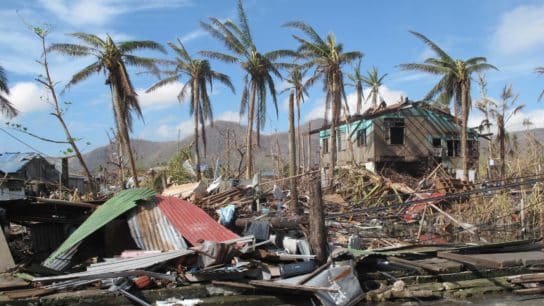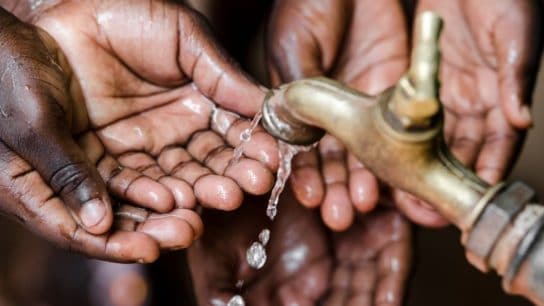The historic first Africa Climate Summit held in Nairobi was hailed as a milestone for showcasing the continent’s climate leadership and potential. However, critics argue it fell short in eliciting concrete commitments and unified action needed to translate ambitions into real progress.
—
The first Africa Climate Summit (ACS), held in Nairobi, Kenya, from 4 to 6 September 2023, was a historic event that brought together African leaders, investors, experts, and civil society to discuss and showcase the continent’s climate action and solutions. The summit aimed to address the challenges and opportunities of green growth and climate finance for Africa and the world and strengthen the continent’s voice and position in the upcoming global climate negotiations. But was the summit a success or a failure? Did it meet its promises and expectations or fall short of its potential? And what does it mean for the future of climate action in Africa?
Achievements of the Summit
The summit had several notable achievements, demonstrating Africa’s readiness and willingness to lead in tackling the climate crisis. Some of these achievements include:
- The adoption of the Nairobi Declaration, a comprehensive document that outlines Africa’s vision, priorities, and demands for climate action and finance. The declaration calls for a new global financial deal with “at scale” and fit-for-purpose financing instruments and products to serve Africa’s specific growth goals. It also urges developed countries to honour their commitment to provide $100 billion per year in climate finance by 2020 and increase their ambition and support for adaptation, mitigation, technology transfer, and capacity building in Africa.
- The launch of several initiatives and partnerships to accelerate and scale up climate action and investment in Africa. These include:
- The UAE-Africa Renewable Energy Partnership pledges $4.5 billion to support renewable energy projects in Africa.
- The US-Africa Food Security Partnership announces $30 million in new funding to enhance climate-resilient food security across the continent.
- The country also launched a new Green Growth Plan, a new green hydrogen deal, Long-term Low Emissions Development Strategies and the Kenya Climate Change Act, 2023.
- It also announced a new National Climate Change Action Plan (2023-2027) and that Kenya would be the new site of the new Africa headquarters for the Global Centre for Adaptation.
- The African Adaptation Acceleration Programme seeks to mobilise US$25 billion by 2025 to scale up adaptation action and resilience building in Africa.
- The showcase of progress and best practices of climate action in Africa across various sectors and themes. The summit featured several sessions, panels, dialogues, and exhibitions highlighting the achievements and innovations of African countries, cities, businesses, communities, and individuals in addressing the climate crisis. Some examples are:
- Eritrea successfully restored degraded lands and increased forest cover through community-based natural resource management.
- Morocco’s renewable energy development and integration leadership aims to achieve 52% of its electricity from renewable sources by 2030.
- Rwanda’s commitment to low-carbon development and green growth, with a plan to reduce its greenhouse gas emissions by 38% by 2030 compared to business-as-usual.
- Papua New Guinea’s efforts to conserve its rich biodiversity and natural resources through community-based forest management and REDD+ initiatives.
Shortcomings of the Summit
Despite these achievements, the summit faced several criticisms and challenges that may have undermined its effectiveness and impact. Some of these shortcomings include:
- The lack of concrete actions and commitments from developed countries to fulfil their climate obligations and responsibilities. While the summit welcomed the pledges and announcements made by some developed countries and institutions, such as the UAE, the US, the World Bank, and the IMF, it also expressed disappointment and frustration over the failure of many others to deliver on their promises and expectations. The summit noted that only $80 billion out of the $100 billion per year target has been mobilised and that only 21% of this amount is allocated for adaptation. It also lamented that Africa still faces significant barriers and constraints in accessing climate finance due to inadequate capacity, complex procedures, high transaction costs, and unfavourable terms.
- The divergent views and interests among African countries on essential climate action and finance issues. While the summit aimed to present a unified voice and position for Africa, it also revealed differences and disagreements among African countries on approaching and addressing the climate crisis. For example, some oil-producing African countries argued that they should be able to use their fossil fuel resources for economic growth and development. In contrast, others advocated for a rapid transition to renewable energy sources. Similarly, some African countries supported using carbon markets and offsets to generate climate finance and reduce emissions. In contrast, others opposed as they would undermine the principle of common but differentiated responsibilities.
- The limited participation and representation of some key stakeholders and groups in the summit. While the summit claimed to be inclusive and participatory, it faced criticism and backlash from some stakeholders and groups who felt they were not adequately consulted or involved. For instance, some civil society organisations and activists accused the summit organisers of excluding them from decision-making and limiting their access and influence. Likewise, some indigenous peoples and local communities expressed their concerns and grievances over the lack of recognition and respect for their rights, knowledge, and contributions to climate action and solutions.
You might also like: Indigenous People Are Essential for Preventing Biodiversity Loss. They Mustn’t Be Sidelined.
The Outlook for Climate Action in Africa
The summit concluded with optimism and hope for the future of climate action in Africa and a call for action and solidarity among African countries and their partners. The summit declared that it would become a regular event held every two years to review progress, exchange perspectives, and converge on shared priorities for global discussions. The summit also urged African countries to implement the Nairobi Declaration and the initiatives launched at the summit and to enhance their ambition and cooperation in advancing their Nationally Determined Contributions (NDCs) under the Paris Agreement.
However, the summit also acknowledged that there are still many challenges and uncertainties ahead that require sustained efforts and support from all stakeholders. The summit recognised that the success of climate action in Africa depends mainly on the outcome of the upcoming global climate negotiations, especially COP28, where Africa expects to see a fair, ambitious, and binding agreement that reflects its needs and aspirations. The summit also emphasised that implementing climate action in Africa requires adequate financing and effective governance, capacity building, technology transfer, innovation, and stakeholder engagement.
Therefore, the summit can be seen as a milestone or a mirage depending on how its outcomes and implications are followed up and translated into concrete actions and results. It has undoubtedly raised awareness and interest in Africa’s climate agenda and potential, but it has also exposed some gaps and weaknesses that need to be addressed and overcome. The summit has set high expectations and standards for Africa’s climate leadership and partnership, but it has also posted significant risks and responsibilities that must be managed and fulfilled. It has opened new opportunities and avenues for climate action and investment in Africa. Still, it has also created new challenges and demands that must be met and satisfied.
In conclusion, the Africa Climate Summit 2023 was a landmark event that marked a turning point for Africa’s role and position in the global climate arena. It showcased Africa’s achievements and innovations in climate action and solutions, as well as its challenges and opportunities for green growth and climate finance. It also presented Africa’s vision, priorities, and demands for climate action and finance and its commitments and initiatives to accelerate and scale up climate action and investment. However, the summit also faced several criticisms and challenges that may have affected its overall effectiveness and impact. Therefore, the summit’s success or failure will depend on how its outcomes are followed up and implemented in the future. One thing is sure: it has set the stage for Africa’s climate action, but it is up to Africa and its partners to make it happen.
Featured image: Paul Kagame/Flickr
You might also like: 5 Biggest Environmental Issues In Africa In 2023














